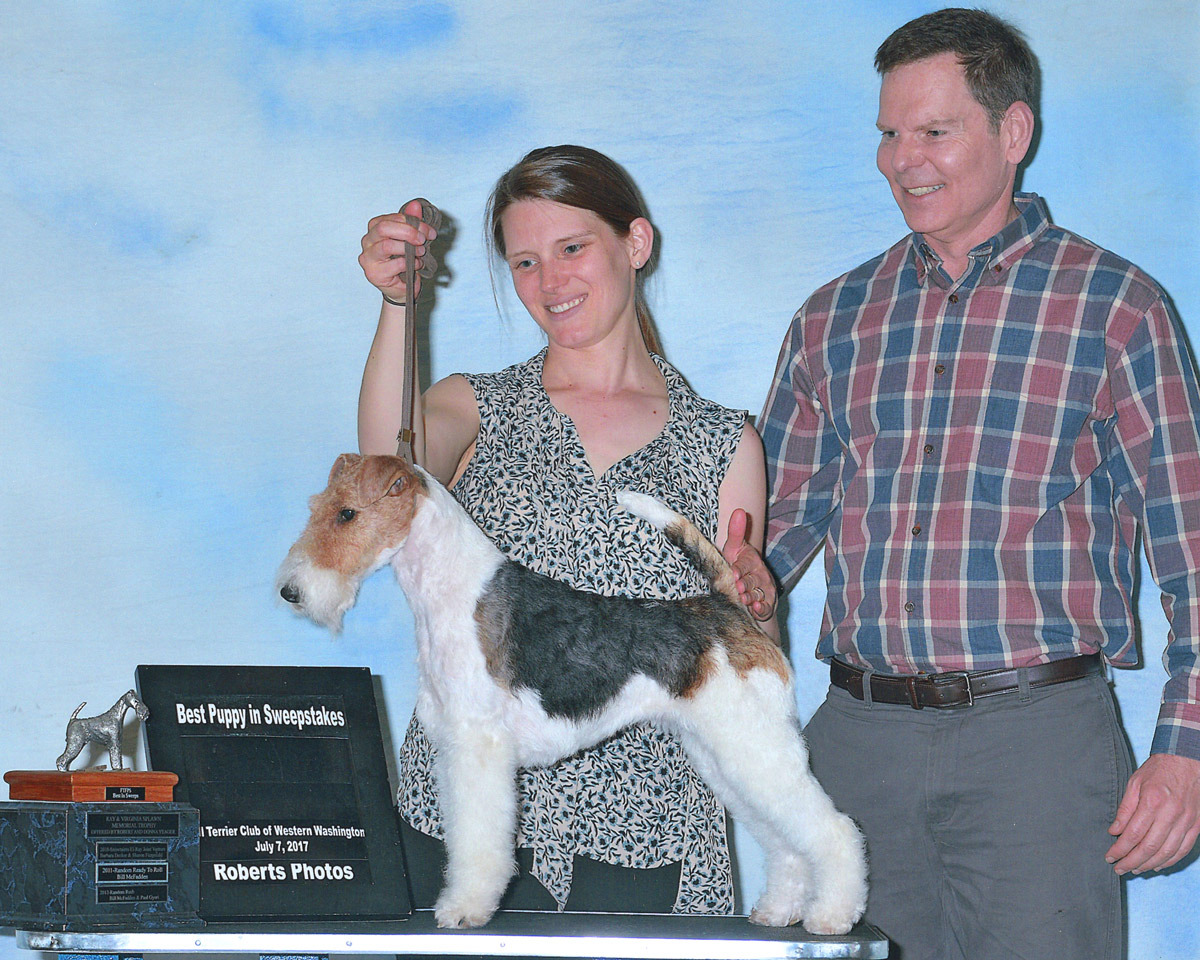Wire Fox Terriers
The Wire Fox is an energetic dog. It’s height scale is from 14.5-16″ at the shoulder. Most weigh around 18-19 lbs. I have seen them heavier however. Although they are the same height as a Welsh, they are finer boned and a more elegant dog. Colors are white, black and tan. The head markings will always be tan, with maybe some white on the beard. The standard calls for a predominantly white dog, so markings make little difference as long as they are 51% white. It is a very curious breed. I always say “turn them loose in a room and 5 minutes later they’ll give you inventory”. Health problems seen have been Allergies (usually food or flea), and epilepsy. These are “happy go lucky” dogs. Everything is a game as far as they’re concerned.
A Brief History of the Fox Terrier


SINCE THE 15TH CENTURY terriers have been known in Britain, homeland of the Fox Terriers. These have been described as small, sturdy, and game, noted for going to earth for their quarry. With the introduction of foxhunting in the 18th century, these terriers found their place as useful members of the hunt whose job it was to kill the fox. Thus it was that most of the terriers were bred in hunt kennels and were developed according to the hunt master’s preference. A dash of this and a bit of that blood would be added to basic terrier stock. Breeding records were not kept until after the introduction of the championship dog show in the 1860s, so it is impossible to sort out the various breeds that form the ancestry of the Fox Terriers. Educated guesses have it that the white English Terrier, Bulldog, smooth-coated Black and Tan, Greyhound, and Beagle were used to develop the smooth variety, the first fox terrier. This breed was then crossed with the rough-coated Black and Tan Terrier to create the wire-haired variety.
Paintings dating from the mid- 18th century depict dogs resembling the fox terrier in both coat types, but it was not until 1860 that any attempt was made to standardize the breed. Smooth fox terriers were introduced to the public at the Birmingham show in 1862 and they quickly won popularity as the working man’s favorite. Later the wire-haired made its debut, but until 1878 the two were classified as separate breeds. The smooth was known simply as the Fox Terrier, a sporting breed. The wirehaired was called the Wire-Haired Terrier and classified as a Non-Sporting breed. After the first breed standard was written, both were granted separate terrier classification.
Shortly after its recognition the fox terrier came to America. Most notable import was Ch. Nornay Saddler, a smooth, brought over by James Austin. Saddler was a dominant force in the breed who produced at least one champion in every litter he sired. Among the first breeds to be recognized by The Canadian Kennel Club, the comparative popularity of the two varieties is evident in registration figures. In the years 1888-1889 there were 180 smoothes registered in contrast to fourteen wires. Today those positions are reversed
